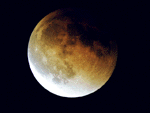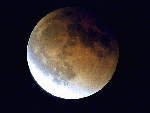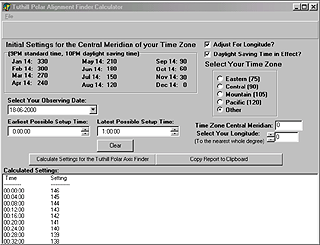If you’ve enjoyed these tips and are in the market for electronics or photo gear, using these links to buy from TigerDirect or Amazon.com The very fist thing I noticed after the first night imaging with my CB245 was how badly I had centered the CCD and the cold finger. Objects I wanted to image were not only completely out of the FOV of my illuminated 9mm reticle but also almost out of the FOV on my 26mm Plössl! Finding things was just a completely ludicrous waste of time. After asking around on the CCD list and realizing that nobody had any tips on and easy way to do this I decided to start rubbing my 2 remaining neurons together to see if I could maybe get a spark. The idea I came up with was pretty simple. If I could get the CCD to see a perfectly centered crosshair I could then move it into the right spot. Great! Easy! I pulled off the top of the camera head and traced a circle around it. Found and marked center with a compass and then drew a crosshair through it. I placed the camera head cap on top of the crosshair drawn on paper and made sure the cap was centered in relation to the circle around it. Now for the hard part: Going in to my mom’s sewing stuff. After a few mumbles and threats I managed to grab a spool of the thicker type white thread that I taped into place in line with the crosshairs. | ||
 |  |  |
In the first image you can see the cap with the threads and in the next one everything mounted and ready to go on the scope for testing. I made an aperature mask out of cardboard with about a dime sized hole in it. Fired up Win245 and played with find mode untill I could see something. | ||
| In the first image below you can see the best I could do to center the chip by eye. The next one is after only about 2 or 3 tweaks of the position of the cold finger. The last image is of the top of a lamp post about 15 meters away. The little ball centered in the Meade 9mm illuminated reticule ep’s FOV and then switched for the CB245 and presto! Quick and dirty centering of your ccd in 15mins or your money back! Now if it would only stop raining! ;o) | ||
 Before |  After |  Test Image |
Author Archive
Centering the CB245 CCD chip
CCD CookBook CB245

First of all my electronics knowledge is little or none. Sure I’ve had to learn a bit in the process of putting this thing together but I still consider myself a complete newbie when it comes to reading a wiring diagram or even figuring out how to wire 2 transformers together. If you fit this description this is not exactly an easy project but if you are patient and are willing to learn, adapt, and implement modifications to suit your needs it is an immensely enjoyable and ‘doable’ project.
Berry, Kanto, and Munger have put together an incredibly simplified and unbelievably robust project. My list of boo-boo’s in building this have been long and severe but somehow its kept on ticking and is finally ready to take some pics. This thing surviving my building it is an achievement in itself! ;o)
Also keep in mind that it is not an elegant solution. There are wires running everywhere, water cooling is a pain, and every once in a while something will probably stop working, forcing you to drag out the Cookbook, multimeter, and the soldering iron and do some detective work. If you want something you can bang on the back of your scope to take pictures and not have to worry about anything else get an ST4 or a Starlight or something. But if you’re a tinkerer, and if you want to learn not only about how to take pictures but also about how a CCD works, and especially if you’re on a budget this project is a whole lot more fun…
Besides, the finished product is yours. By that I mean, (good or bad), there’s not another one out there exactly like it.
And never forget help is always available on the mailing list. The people on this list have been incredibly patient and completely indispensable in helping me put this thing together. (Thanks guys and gals!) You can subscribe to the mailing list on the AstroArchive web page and its called the “Homebuilt CCD” list.
Well now that I’ve gotten off of my soapbox let me tell you about how I’ve built this thing.
The power supply and interface are housed in an old external SCSI drive bay. There was plenty of space for everything and I decided to leave the SCSI power supply in (board at the top) to feed the Peltier off of the 5v it provides. I wired everything to the same AC input and switch and also used the SCSI power supply to power a fan, led’s, etc. Next down you can see a couple of 12v/500ma transformers. I had to opt for this solution because I simply could not track down a 15v/500ma supply here in Portugal. Silly huh? Anyway this setup gives me about 17v which is within spec and so far has been working great. The bridge and 4700uF capacitors have been glued with a glue gun to the back of the box.At the bottom you can see the interface board and the heat sinks which barely fit. Here is the closed box. From the left is the connection for the Peltier from the SCSI supply, then the fuse, power led, the signal shield jack, and 2 female DB25 connectors for the camera head and computer… (have to label those!) Surprisingly I’m getting a very clean image even with everything stuffed into the same box. From what I read on the CB list I was expecting to get of lot of interference from the power supplies sitting next to the interface board. On the first night out I did 2 min integration’s and got very clean images none the less. Lucky me? For the camera head I didn’t deviate at all from what’s in the CookBook. I tried some wacky ideas that went very badly and quickly decided to stop trying to be a smart ass and follow the instructions provided. For the newbies: Boy are you going to have fun with this part! Little tip: look for 16 pin ribbon cable connectors like the ones used for connecting IDE drives. Long ago the 16 pin ones were used to connect joysticks but I’m sure they’re still pretty easy to find. The plastic connector can be easily trimmed down to fit in the opening on the camera head and epoxied into place. Worked for me! |  |
 | |
 |
“First light” was on the 3rd of October, 2000 at 00:56UT with the camera head on the table and a 50mm Canon lens on top of it. I taped a Kodak film box top to the ceiling and hoped for the best… Check out my CB245 gallery for images taken with this camera: I’d like to end this by leaving some links for would be CB245’ers: Richard Berry’s CookBook Home Page
|  |
Lunar Eclipse – Portugal January, 2000
Tuthill Polar Alignment Calculator by Ray Porter
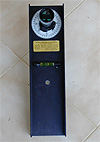 If you own a Tuthill Polar Alignment finderscope then this free little utility written by Ray Porter is something you need. Thanks to this handy utility I have never even had to look at the Tuthill Polar Alignment scope’s rather complicated instructions. This is a more modern version of an an old QuickBasic program also available as freeware on the internet. Some important modifications have been made such as adjustment for longitude, daylight savings time, and time zone, but is still fast, light weight and very easy to use. The program asks you for your date, earliest setup time, latest setup time, your longitude and time zone and does all the calculations for you. The results can be read and discarded or the report can be copied to the clipboard. If you want a copy of TPACalc just send an e-mail to Ray Porter and he will e-mail you the program. |
MouseCam – Conectix QuickCam Mods
I finally managed to track down a used Conectix black and white wecam on E-bay and after a few weeks I was testing and tweaking to my hearts content. I quickly realized I was going to need some sort of box to put this thing in so it would After rummaging around some old computer equipment at the office I came across an old IBM PS/2 mouse. Hey, the dimensions were right… Its really light, the hole at the bottom seemed the right size… Well why the heck not?? As it turns out the hole on the bottom where the mouse ball goes in is the exact size of a 35mm film canister. I had to break off and sand down the plastic that held the ball cover in place. Not too much as I was going for a tight fit. If fact the fit turned out to be so good that I didn’t even bother to glue the canister in place. I had a laugh when I discovered that the IBM mouse’s guts were made by Logitech. How ironic… (Conectix was bought by Logitech.) On the inside of the mouse the Conecix PCB fits perfectly and the cable is about the same size as the old mouse cable so I could use the plastic guider and retainer that was already part of the mouse housing. To hold the wecam board in place first I made an outline with an permanent marker of where I wanted it to stay, and eyeballed more or less the best places for the screws to go and marked them as well. Then I took one of the thicker type paper clips and heated up with a lighter and melted guide holes through the marks I had made. For the bolts, I ransacked a couple of old serial cables. The type that go from the mother board and end in a 9 or 25 pin D connector on the computer box where you plug in your mouse or modem or whatever usually have a hex-nut that is the perfect size for this job. I removed the hex nut with the screw and the little bolt on the inner side of the 9 pin connector and used the hex nut on the inside of the mouse and the bolt on the under side to tighten it in place. The Conecix board is held in place by a strip of plastic I cut out of an old QIC-80 tape And here’s a bottom view of the finished product. It is very easy to align the CCD to Eventually I’m going to try to setup a computer fan on the other side of the mouse so I can cool my… MouseCam! One great thing I discovered is that since the ccd chip is much closer to the eyepiece Hey! Whats that on your OTA?!? If nothing else a mouse hanging off the back of your telescope does attract a lot of attention. My father and I had a laugh at how ridiculous the thing looks on the LX50. But, hey… Its works! Check my astro gallery for images taken with modified webams like this one: http://astroturtle.com/imaging/ | 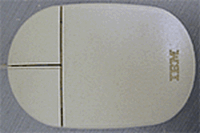 |
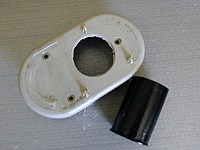 | |
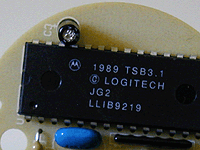 | |
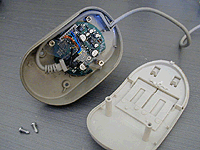 | |
 | |
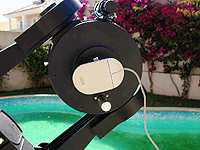 |






















